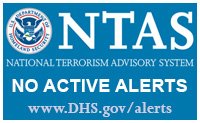Workplace Violence Prevention

The ASIS International Standard on Workplace Violence defines workplace violence as:
“A spectrum of behaviors, including overt acts of violence, threats, and other conduct that generates a reasonable concern for safety from violence, where a nexus exists between the behavior and the physical safety of employees and others (such as customers, clients, and business associates), on-site, or off-site when related to the organization.”
Typically, this is divided into four categories of potential violence (as outlined in this FBI document):
- TYPE 1: Violent acts by criminals who have no other connection with the workplace, but enter to commit robbery or another crime.
- TYPE 2: Violence directed at employees by customers, clients, patients, students, inmates, or any others for whom an organization provides services.
- TYPE 3: Violence against coworkers, supervisors, or managers by a present or former employee.
- TYPE 4: Violence committed in the workplace by someone who does not work there, but has a personal relationship with an employee—an abusive spouse or domestic partner.
Creating effective policies and procedures to address these threats requires a comprehensive approach that integrates threat assessment, active assailant/active shooter response, physical security, security staffing, training, and a commitment to a healthy organizational culture that sustains personnel safety.
The Human Intelligence Group has the resources and experience to assist your organization with creating workplace violence prevention policies and programs that integrate all of these practices. In particular, our expertise with threat assessment allows us to provide guidance, training, and assistance that is designed to increase the likelihood of identifying and managing potential threats of violence before they erupt.
Our experts can assist with every aspect of workplace violence prevention, including:
- reviewing/writing policies and procedures;
- conducting or overseeing training;
- leading drills;
- serving as consultants to or members of Threat Management Teams;
- creating threat management plans; and
- serving in an advisory capacity to senior leadership.
As with everything we do, our goal is to help you create a workplace violence prevention program that uses an evidence-based approach built on current, peer-reviewed research, as well as consensus-based standards and guidelines. We can help with every stage of the process, and will continue to assist you as your needs evolve and potential threats emerge.
For more information, use the links above, or contact us directly.
